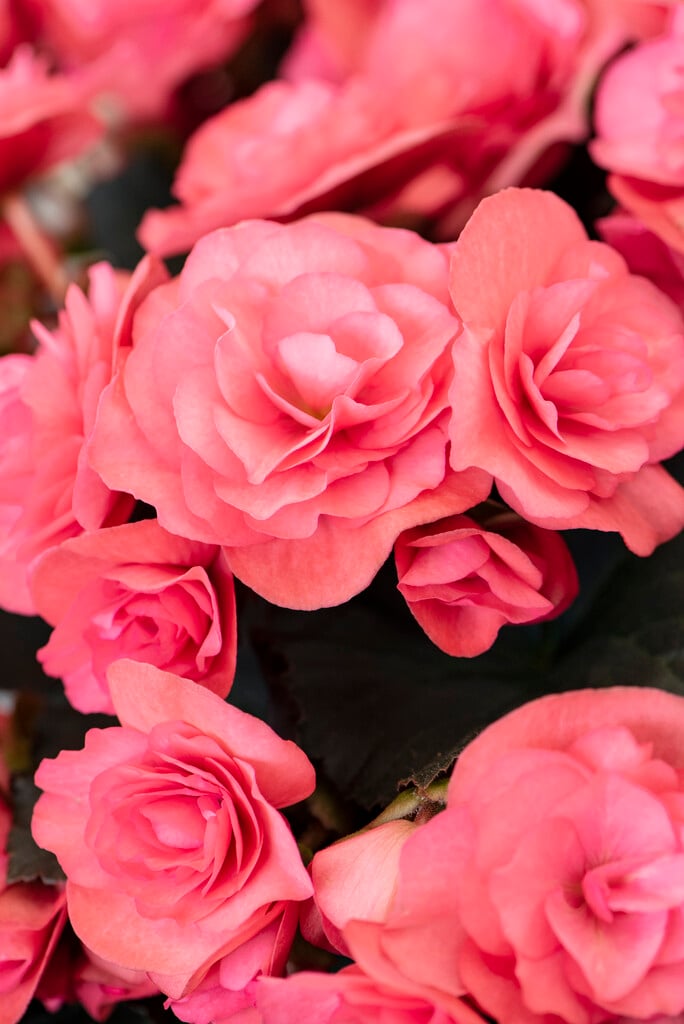Begonia Solenia Light Pink ('Beman Hellrosa'PBR) (Solenia Series)
begonia [Solenia Light Pink]
A tender, rounded, bushy herbaceous perennial to around 30cm in height with heart-shaped dark green foliage and double rose-pink flowers appearing in the summer. Ideal for hanging baskets, pots and containers or in a flower border as edging or mass planting

Size
Ultimate height
0.5–1 metresTime to ultimate height
1 yearUltimate spread
0.5–1 metresGrowing conditions
Moisture
Moist but well–drainedpH
NeutralColour & scent
| Stem | Flower | Foliage | Fruit | |
| Spring | Green | |||
|---|---|---|---|---|
| Summer | Pink | Green | ||
| Autumn | Green | |||
| Winter |
Position
- Full sun
- Partial shade
Aspect
East–facing or North–facing or South–facing or West–facing
Exposure
Sheltered Hardiness
H1BBotanical details
- Family
- Begoniaceae
- Native to GB / Ireland
- No
- Foliage
- Deciduous
- Habit
- Bushy
- Genus
Begonia can be annuals, evergreen or deciduous perennials or shrubs, with fibrous, tuberous or rhizomatous roots and usually asymmetrical leaves, often strikingly patterned, and small or large flowers, both male and female in the same cluster
- Name status
Trade
How to grow
Cultivation
Ideal for hanging baskets and tubs, and generally bought as cuttings. Start off indoors in spring in light, well-drained, neutral compost. May be grown permanently under glass in bright light shaded from direct sun. Otherwise move outdoors into a sunny or semi-shaded postion when all risk of frost is past. Dry off tubers in winter and store frost free. See begonias: outdoors for further advice
Propagation
Propagate by division or stem cuttings in the spring
Suggested planting locations and garden types
- City and courtyard gardens
- Cottage and informal garden
- hanging basket
- Patio and container plants
- Bedding
- Conservatory and greenhouse
- Flower borders and beds
- Garden edging
Pruning
Remove old stems and foliage as the plant dies back for winter
Pests
May be susceptible to caterpillars, mealybugs, thrips, glasshouse red spider mite, vine weevil and aphids
Diseases
May be susceptible to grey moulds, powdery mildews, stem rot and rhizome rot
Get involved
The Royal Horticultural Society is the UK’s leading gardening charity. We aim to enrich everyone’s life through plants, and make the UK a greener and more beautiful place.